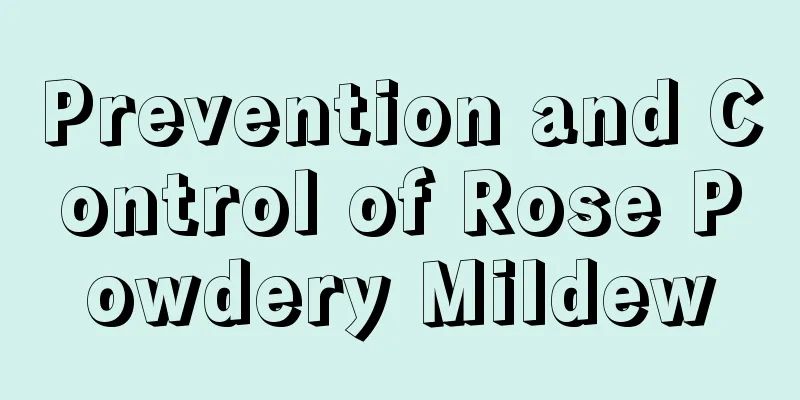Prevention and Control of Rose Powdery Mildew

Disease symptomsWhen this disease occurs, the leaves of the rose will turn yellow, wither, and curl. The flowers sometimes fail to open normally, and the surface of the plant will be covered with a layer of white powdery substance. In severe cases, it can affect the normal growth of the plant. Onset timeMay is the common peak period of the disease, and June to July is the infectious period. Disease environment1. In warmer climates, this disease is more likely to occur regardless of whether the air is humid or dry; 2. Excessive nitrogen fertilizer use makes the soil where the crops are grown seriously lacking in potassium and calcium, which makes the disease more likely to occur; 3. Poor light transmission and ventilation, coupled with the plants being too dense, will aggravate the disease; 4. This disease is prone to occur when the temperature difference of cultivated plants is too large; 5. This disease is prone to occur when the soil is too dry. Prevention and treatment methodsPrevention: When growing plants, observe the soil more often, water them appropriately, and try to balance the nutrients when fertilizing, instead of applying too much fertilizer, so that the plants can improve their own resistance. Prune them in a timely manner, especially when you find diseased branches and leaves such as yellowing and withering, clean them up thoroughly. Pay attention to the light and ventilation environment. Roses should be placed in a location with plenty of sunlight and can be directly exposed to the sun, and there should also be good light and ventilation. Treatment: Some bactericidal and sterilizing drugs can be used for treatment. The soil can be sterilized before planting. During the growing period, the surface of the plants can be sprayed with bactericidal liquid medicine. The best time for spraying is between 8 and 10 in the morning and between 4 and 7 in the afternoon. |
<<: A complete list of causes of flower diseases!
Recommend
Why can't you grow gourds at home? Feng Shui considerations for growing gourds at home
Can I grow gourds at home? It is good to plant go...
How many kilograms of garlic seedlings are produced per mu
Yield of garlic seedlings per mu Garlic sprouts r...
These flowers are so easy to grow, just throw them in water
1. Water-inserted gardenia Procedure 1. Cut the w...
Does the mage prefer yin or yang?
Does the mage prefer yin or yang? The Master Plan...
Is red lycoris toxic?
1. Is it toxic? Red spider lily is the red spider...
When is the best time to sow basil?
The right time to sow basil Basil is a plant of t...
Is Gaillardia poisonous?
1. Is it poisonous? It is brightly colored but no...
How to make bonsai of Albizia Julibrissin
Select tree species The best tree species is a tr...
What soil is suitable for growing kiwi fruit?
Introduction to Kiwifruit Kiwi is a positive plan...
Does green radish absorb formaldehyde?
1. Can I smoke? It is undeniable that it has a ce...
Five "don'ts" for succulents before autumn
Do not increase the sunshine too quickly In summe...
What crops are suitable for planting in spring? What crops can be planted in spring?
The weather is most suitable for planting crops i...
How to propagate mountain roses
1. Seed propagation It is best to sow seeds in au...
What to do if the leaves of money tree turn yellow
1. Increase watering Reason: Not watering the mon...
Does kale bloom?
Does kale bloom? Kale will bloom. Kale is a bienn...









